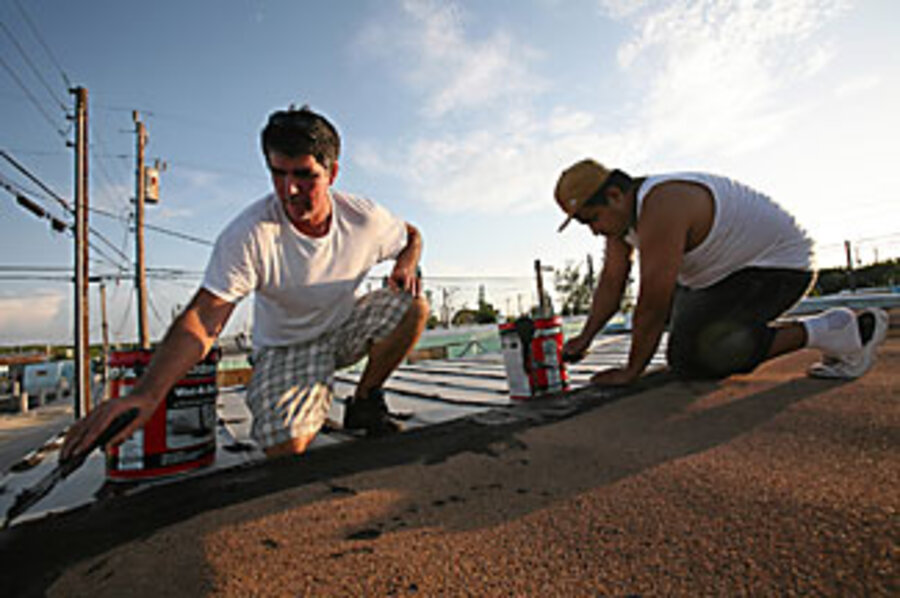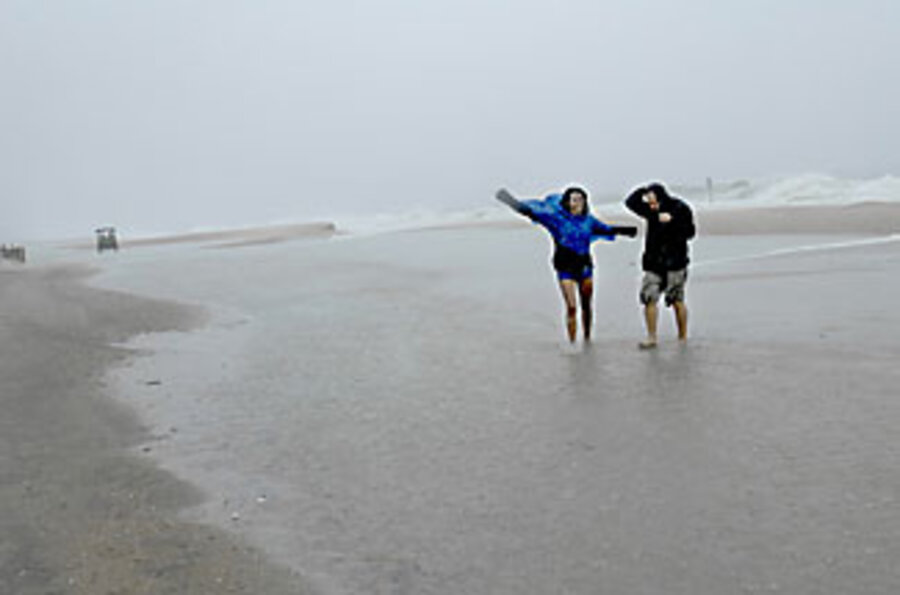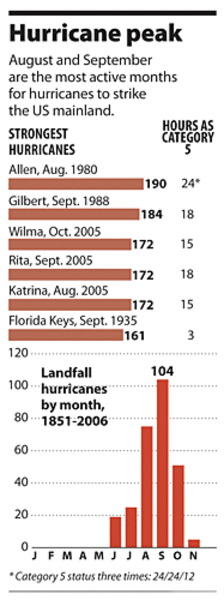Getting ahead of the next big storm
| Atlanta
In the post-Katrina emergency management world, the buzzword is "dynamic regrouping."
In essence, it's the Federal Emergency Management Agency's new proactive response philosophy, using clear-cut lines of communication to move resources along each storm's track to be ready when it strikes – an unprecedented real-time collaboration between soldiers, civilian emergency professionals, and volunteers.
As the US now faces a triumvirate of working cyclones, the new system is undergoing its first trial by fire. With hurricane Gustav and tropical storm Hanna already ashore, and hurricane Ike lining up to strike, the emerging question isn't whether there'll be enough helicopters or rescue boats on hand, but how emergency managers will fill critical volunteer slots ranging from shelter workers to front-line healthcare personnel.
"If hurricanes keep slamming in, FEMA's ability to deploy volunteer agencies is greatly hampered," says Tom Kirsch, a medical response adviser to the Red Cross in Baltimore. "Every agency in the country, whether volunteer or government, is going to be faced with huge stresses. The depth of resources nationally, it's not a deep bullpen there."
With two major storms ashore, the system has mostly worked so far, as thousands of primarily Red Cross volunteers helped out on the periphery of the massive, but mostly orderly, Gulf Coast evacuation that preceded hurricane Gustav.
But even as some in Louisiana girded for a long recovery process, with power outages that could last up to a month in storm-struck coastal parishes, emergency managers began sending resources to the East Coast to confront tropical storm Hanna, including electric crews from the Carolinas who had to leave Louisiana to get ready back home.
Plans change as Ike approaches
Updating readiness plans every six hours, the Defense Department's Northern Command, FEMA, the Red Cross, and state emergency management centers are now tracking Ike, potentially the most powerful storm of the season, as it aimed for the Gulf Coast Sunday.
Planning on the fly for multiple storms is a juggling act made easier by clear directives and open lines of communication between various agencies, says Jack Herrmann, a senior adviser for the National Association of County and City Health Officials in Washington.
Increased focus on volunteer capabilities, too, has given emergency officials a more accurate picture of who is available to help out, when they can come, and what they can do.
"The mood is pretty calm," says Mr. Herrmann from the Red Cross command center in Washington.
"I think people recognize the potential of having storms going on at the same time, and the resource challenges that might occur," he says.
In 2004, four hurricanes – Charley, Frances, Ivan, and Jeannie – slammed into Florida, with some central Florida counties getting struck three times.
What's different now is that, depending on where Ike strikes, the country could be tied up with three different recovery efforts in geographically disparate places, forced to scramble critical equipment, volunteers, and electric crews across vast distances.
"When you have back-to-back storms of national significance, the question is whether resources currently engaged in the first disaster are going to be freed up in time for the second one," says Craig Fugate, director of the Florida Division of Emergency Management in Tallahassee.
Red Cross challenged
This storm season, that's already proving a challenge, says Armond Mascelli, vice president of disaster services at the Red Cross in Washington.
"We do have a deep pool of resources," he says, "although ... there is a certain limit on how many volunteers you can get into a state, so we'll be looking for folks to step forward."
But according to Mr. Kirsch, the Red Cross has laid off a third of its paid workforce this year, and is already having to borrow money for this year's storm season – an indication that the plight of storm-struck regions has not registered among the nation's charitable donors.
Moreover, many church groups are reporting they have only skeleton crews of volunteers available to help areas recover. And Kirsch says he's already hearing about volunteer fatigue from disaster medical assistance teams (DMAT) in New Orleans, many of whom deployed only to face days of boredom.
Volunteer fatigue
"All these people getting deployed who didn't get used, who are sitting around down there, are they going to go out on the next one – and the next one?" he says.
The triple storm combination could affect storm victims in several ways.
Widespread power outages, especially the downing of major transmission lines, could limit the ability of mutual assistance electric crews to restore power quickly, says Jim Owen, a spokesman for the Edison Electric Institute.
Unlike Katrina, there has been no immediate cash dispersals to storm victims, meaning many storm victims are likely to come home to empty bank accounts.
Gas stations, food stores, and hospitals may stay closed for long periods, leading to further hardships.
Already, Terrebonne Parish, La., where Gustav made landfall, is expected to be without power for up to a month, and residents have been urged to not return until services are restored.
Still, US emergency officials said Friday that they can handle the triple threat.
FEMA currently has three national logistics staging areas and eight prestaging areas from where supplies are distributed directly to citizens.
Under the new response structure, FEMA's planning team consists of two groups. One concentrates on recovery operations. The other planning group focuses on trying to anticipate local requirements 72 hours ahead of landfall.
"That's what we've done that enabled us to continually provide support to Gustav while looking ahead to Hanna and Ike," says Glenn Cannon, FEMA's assistant administrator for disaster operations.
Still, emergency officials welcomed news Sunday that tropical storm Josephine, which posed a fourth Atlantic threat, dissipated overnight, weakened by strong atmospheric windshears.









